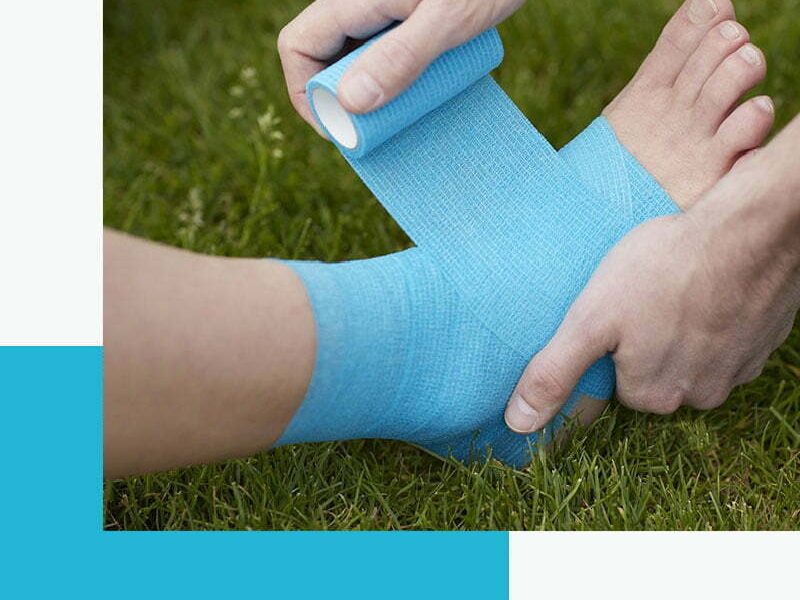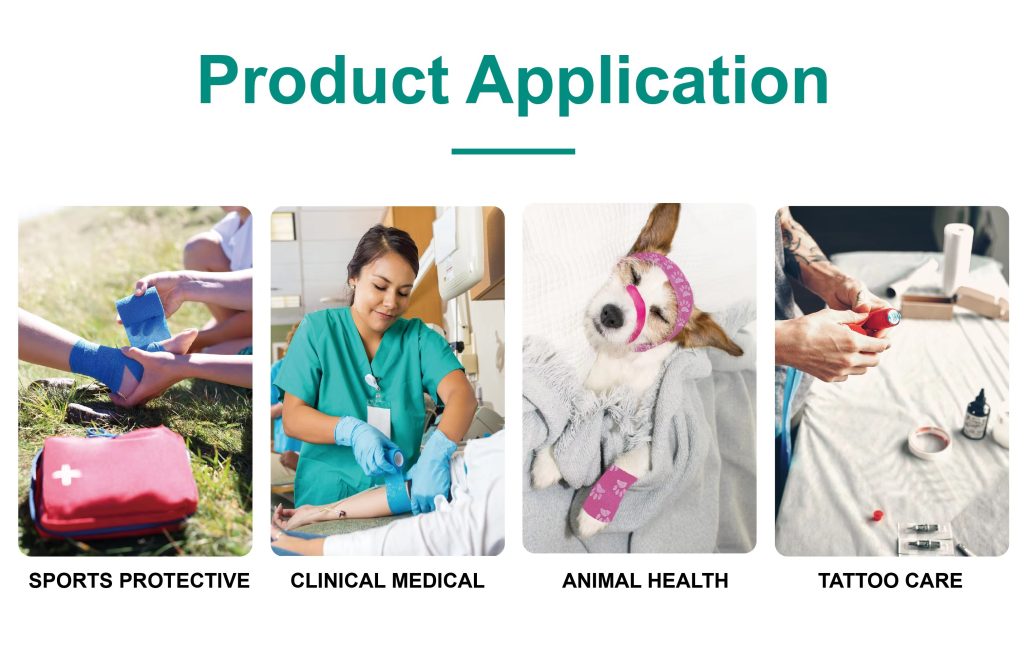
The Use Of Self-Adhesive Bandages
Self adhesive bandages have become an indispensable tool in medical, rehabilitation, sports protection, and home care due to their versatility, ease of use, and comfort. The following are the main applications of self-adhesive bandages.
1.Medical and nursing:
Fixed dressings: the most commonly used and core function. Used to fix dressings such as gauze and cotton pads covering wounds or surgical incisions, providing gentle pressure to prevent dressing displacement, detachment, or contamination. It will not stick to the wound itself, reducing the pain when changing dressings. It can also be used for splint fixation, joint support, pressure therapy, etc
2. Sports protection and rehabilitation:
- Sports injury protection: Athletes often use it to wrap around joints such as ankles, wrists, fingers, knees, etc., providing additional support and stability, limiting excessive range of motion, and reducing the risk of sports injuries such as sprains and strains (preventive patching).
- Sports injury management and rehabilitation: Acute injury management: Immediately apply pressure bandaging (combined with cold compress) after sprains or strains to help control swelling and bleeding. Or provide support and protection for injured joints or soft tissues during rehabilitation, helping athletes gradually recover their motor function.
3. In the field of veterinary medicine:
Dressings, bandages, fixed splints or bandages, fixed catheters, etc. used to fix animal wounds. Its self-adhesive properties are particularly important on animals, as traditional bandages are prone to loosening due to their high levels of activity.
4. Family and daily first aid:
- Family small wound treatment: a must-have for family medicine kits. Used for bandaging small wounds such as cuts and abrasions, fixing gauze pads.
- Fixed ice pack/hot compress bag: Conveniently secure the ice pack or hot compress bag to the desired area of the body.
- Temporary fixation: Temporarily fix a twisted joint when needed (before seeking medical attention).
- Other creative uses: Sometimes also used for non-medical purposes, such as temporary fixation of items, horticultural tying (without damaging plants), etc.
5.The core advantages of self-adhesive bandages:
- Self adhesive: No need for tape, pins or clips to fix, easy and fast to use, without causing additional damage or discomfort.
- Elasticity: Provides comfortable compression and support, conforms to body contours, and does not affect joint movement (with appropriate bandaging).
- Breath ability: allows air and moisture to pass through, keeping the skin relatively dry and reducing the risk of skin immersion.
- Low allergenicity: usually made of low allergenic materials (such as synthetic fibers, natural latex with extremely low or no content), reducing skin allergic reactions.
- Non stick wound: Less pain when changing dressings.
- Not easy to tear: can be torn open by hand without scissors.
- Multiple colors/sizes: meet different needs and aesthetic preferences.


